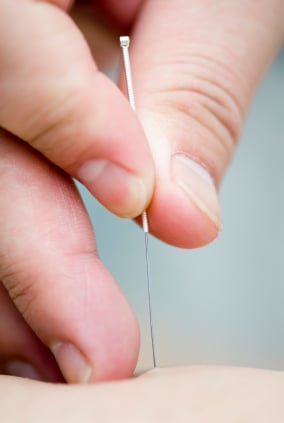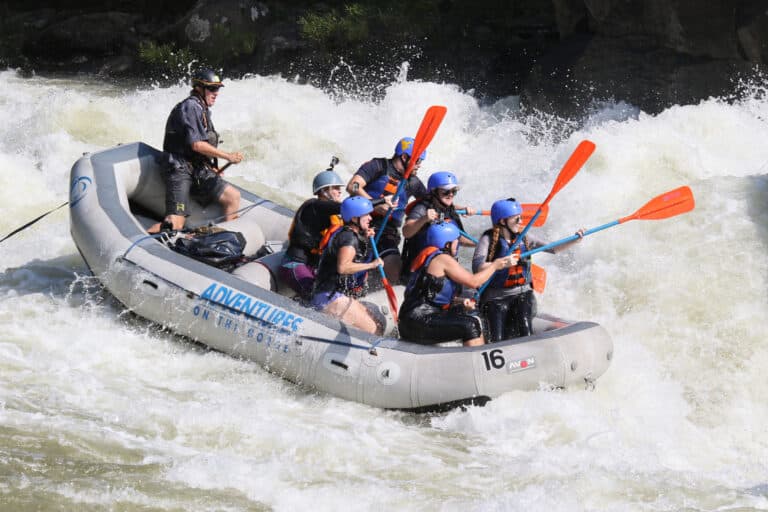An injury can ruin your day on the trail in a split second and sideline you for weeks. But before you wrap on a bandage and try to run through the pain, consider acupuncture. Acupuncture is a tool of Chinese Medicine by which tiny, solid filament needles are inserted into the skin at strategic points to help the body heal naturally without drugs, surgery, or side effects. Chinese medicine is a system of internal medicine treating everything from headaches to fibromyalgia to diabetes. A branch of this, Die Da or “hit-fall” medicine, originated in Ancient China to treat injuries sustained from martial arts. It quickly and effectively addresses trauma to any part of the body.
Chinese medicine is based on the concept that “Qi” or vital energy flows through our bodies along with our blood. Trauma can obstruct the flow of qi and blood, and if left untreated, or improperly treated, injury can become chronic, recurrent, or even debilitating. Acupuncture is recognized by the National Institute of Health (NIH) and the World Health Organization (WHO) as a safe and effective medical therapy. Acupuncture, combined with Tui na, a kind of massage, Chinese herbal medicine, Qi Gong or Tai Chi, and dietary therapy, are the major components of Chinese medicine and have been practiced for over 5000 years.
The approach to treating sports injuries with Chinese Medicine differs from that of Western medicine in a few ways. You have probably heard of the acronym R.I.C.E. from your doctor: Rest, Ice, Compression, and Elevation. Rest is obvious, and taking time to heal is essential. Elevation is helpful as well. Chinese medicine takes a different perspective on the ice and compression elements of this old adage, however. Ice is rarely used in Chinese medicine. The aphorism “Ice is for dead people,” explains the Chinese perspective. In Chinese Medicine it is rarely used after the first 24 hours of an acute injury as it contracts blood vessels, stagnates and congeals blood and fluids which, in turn, slows healing and can lead to long term residual pain and eventually arthritis in the affected area. It constricts the flow of blood and “qi” or vital energy in the area of the injury, further damaging the tissues. Liniment or “herbal ice” is often used instead.
Compression usually in the form of an elastic bandage wrapped snugly around an acute injury also stagnates blood and fluids, usually pushing them out to the outside edges of the bandage. Here again, promoting the flow of blood and fluids by avoiding compression, helps the body heal faster.
In more severe injuries, an x-ray or MRI is the best course to rule out fractures, ligament or tendon rupture. In these cases Western diagnosis and treatment are important. Acupuncture can be effective in speeding healing in these scenarios as well and in many cases can prevent the need for surgery. When surgery is required, acupuncture is helpful in speeding recovery. There are also topical and internal herbal remedies to stop bleeding immediately, ease pain and even knit broken bones.
The most common sports injuries tend to be sprains. This is especially common for trail runners. Acupuncture can reduce pain and swelling in an acute sprain in a matter of minutes, reducing healing time dramatically. Even for grade 2 and 3 sprains, where there is real ligament damage acupuncture is quite effective. With sprains the earlier the treatment, the better. Remember to only use ice for 10 minutes at a time for the first 24 hours. See a practitioner of Chinese medicine as soon as possible. Again, if severe, see your doctor to rule out tendon rupture or fracture.
Tendonitis is also a very common sports injury caused by repetitive movement, and because it can rarely be traced back to an original injury, it is usually a late stage chronic pain by the time help is sought. Tendonitis usually manifests in the rotator cuff, the Achilles tendon, wrist or even elbow. A combination of acupuncture, massage, and liniment can make the biggest difference for this injury. Carefully examining the movement that is causing this and retraining with amended position is essential.
The type of pain, the aggravating factors, and the location are more important in diagnosing sports injuries than the severity of pain in Chinese medicine. There are many types of pain indicating many types of injuries. Pain that is shooting or refers down an extremity usually indicates nerve involvement. Stabbing pain that gets better with exercise or dull pain that gets worse as the day goes on corresponds with different injuries. All can be treated equally well with Chinese Medicine.
Whatever the injury, heal safely without drugs and reduce the need for surgery with Chinese Medicine, an inexpensive, holistic, benign therapy that works well independently or in conjunction with Western medicine. Be sure to find a practitioner that is a licensed acupuncturist or diplomate of Oriental medicine with a four year degree.
Dos and Don’ts:
The sooner the better.
The sooner the injury can be treated, the better the outcome. Acupuncture frees the joint, the flow of blood and qi, vital energy, and facilitates healing. However, if not treated, acute injuries can become chronic injuries. Chronic injuries respond to acupuncture as well, though it may take longer to reach complete healing.
How Long?
Acute injury, depending on severity can be addressed in fewer treatments spaced closely together over a couple of weeks. A more chronic injury tends to respond better to a weekly treatment over a longer period, depending on a variety of factors including severity, time of onset, and patient compliance.
Ice is for dead people
Remember to only use ice for 10 minutes at a time for the first 24 hours as it contracts blood vessels, stagnates and congeals blood and fluids which, in turn, slows healing and can lead to long term residual pain and eventually arthritis in the affected area.
Surgery
Seeking a Western diagnosis is important. Seeking acupuncture soon after can help prevent the need for surgery by removing obstacles to healing. When surgery is necessary, Chinese Medicine is indispensable to pre-op preparation and speeding recovery time.
A Knowledgeable Liaison
A good acupuncturist will recommend an x-ray or MRI for a more serious injury to rule out rupture of tendon or bone fracture. They will also advise when and what sort of movement is helpful, and when to rest. Remember only to see a licensed acupuncturist with a four-year degree in Chinese Medicine.
Be open to herbs
Your acupuncturist can prescribe a topical liniment made from Chinese herbs to help penetrate the joint or muscle, stop pain, reduce swelling and inflammation, and disperse stagnant qi and blood. Some topicals can stop bleeding, mend tendons, and even knit bone.
Listen to your body
Chinese medicine is based on common sense. Running or cycling through the pain may seem like a good idea, and sometimes, after the bulk of the healing has taken place, it is. Sometimes it truly slows healing. Ask your acupuncturist. She can also prescribe strengthening exercises and movements.
Lara Ferguson Diaz, L.Ac., Dipl.O.M. (NCCAOM) is owner of Lutea Acupuncture & Herbs and practices at Integrative Family Medicine of Asheville: 828-582-5403.








